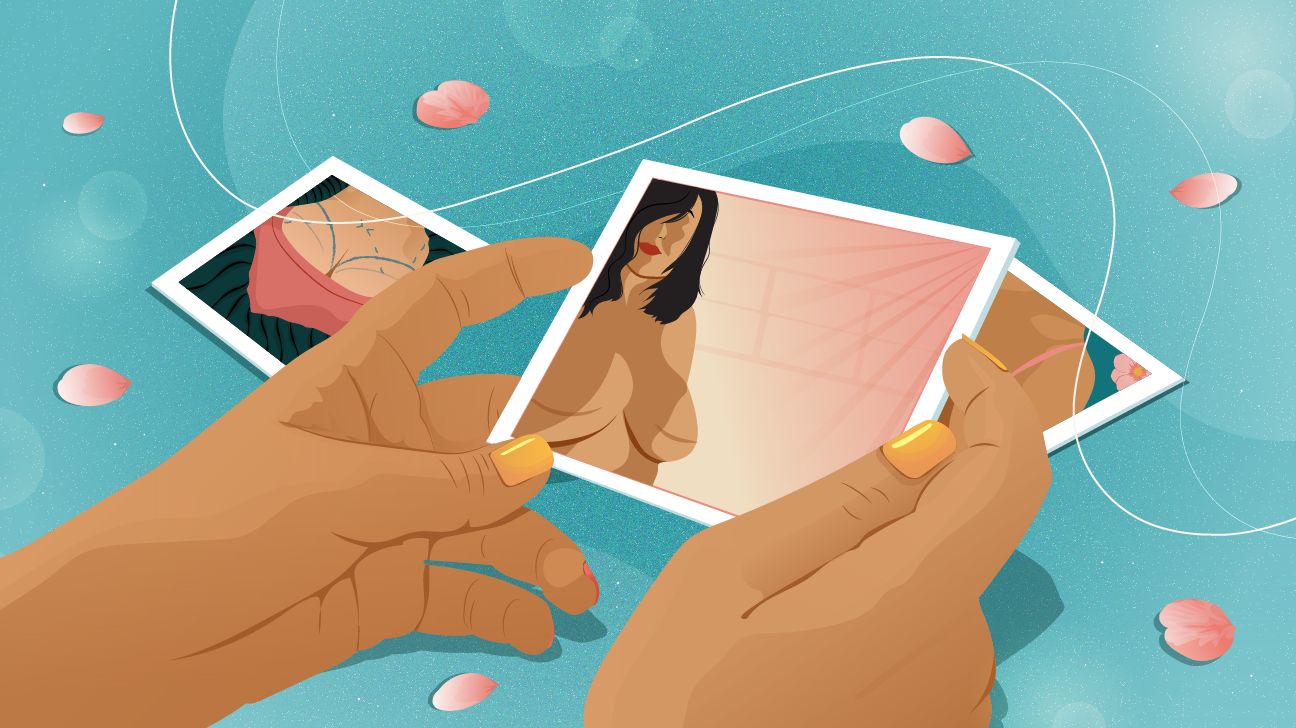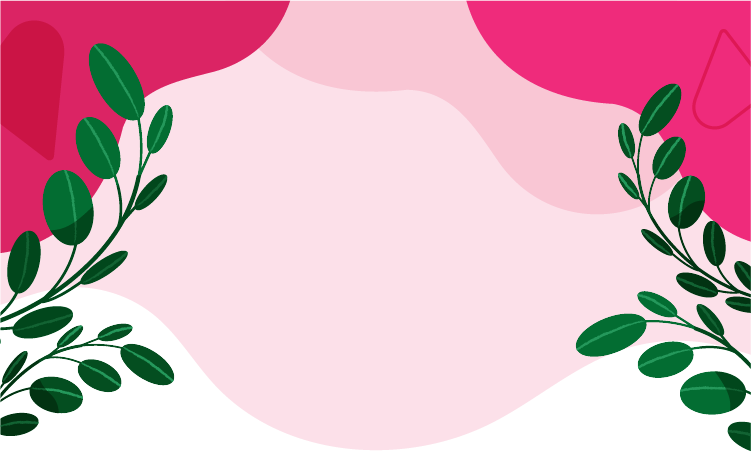The Emotional and Physical Roller Coaster of My Breast Reconstruction
July 20, 2021
Content created for the Bezzy community and sponsored by our partners. Learn More

My breast reconstruction was transformative and healing, but it was also emotionally challenging.
When I was diagnosed with breast cancer in 2014 at 42 years old, I received referrals to a few plastic surgeons. It never occurred to me that a plastic surgeon might not have experience with breast cancer patients. In the postdiagnosis chaos, I didn’t even know to ask. I thought reconstruction would be the easy part.
I also wasn’t yet connected with the breast cancer community, where others could have empowered me with their stories and experiences.
When I was given the names of three plastic surgeons, I went with the one that accepted my health insurance. My consultation was brief. They showed me a small portfolio of breast reconstructions using implants and explained the procedure.
They didn’t educate me on any other options, like autologous reconstruction (using your own tissue for breast mounds rather than implants) or aesthetic flat closure. They never mentioned how radiation can affect a reconstruction.


Mentally preparing for reconstruction
Before I share more about my actual reconstruction experience, I want to share how I gave myself a small sense of ceremony to honor my body before the imminent changes.
Before anything was done to my body, I documented myself with simple iPhone captures. Already mourning, I was trying to say goodbye and begin a grieving process.
I clearly remember taking pictures of my breasts in my favorite bra on the day I received my diagnosis, wondering if I would die, wondering what it would be like to lose my breasts.
Leading up to my mastectomy, I also took intimate personal photos of my chest with my then-husband. I wanted to remember what once was and would never be again.
I’ve returned to those photos countless times to reflect on how far I’ve come, and to honor the memory of the old me when a pang of grief came. There was comfort in turning to those pictures during emotional moments, like listening to a sad song when working through feelings after a breakup.
Later, I used those premastectomy photos and other pictures taken throughout the course of my treatment, reconstruction, and recovery as part of an exhibit titled “Reconstructed: A Breast Cancer Documentation Project” installed at El Comalito Collective.
I never intended to show anyone except my closest friends these scrappy iPhone selfies. But for me, documenting my experience and educating others gave me a measure of healing. The exhibition allowed me to feel seen and heard while teaching viewers about my individual breast cancer experience.
I often encourage people to heal the pain of changed bodies through creative outlets like writing, painting, sculpture, embodied dance movement, or collage. It can help you deeply process through the emotions of having a changed body — even if you don’t consider yourself creative.
What I learned postmastectomy
At the time of the mastectomy, I had chest expanders placed under my pectoral muscles. Chest expanders are basically empty balloons that surgeons fill with saline over time to stretch remaining chest tissue and accommodate for breast implants later.
My first chest expander saline fill was very painful, and I returned to my plastic surgeon the same day to remove some of the saline. Instant relief! Over the next 7 months, the saline fills never caused me much pain.
The plastic surgeon put in my implants before I started radiation. Later, I learned what a mistake that was. Radiation often causes skin and tissue to scar, tighten, and shrink, which can greatly affect the outcome of implants or autologous reconstructions.
I was very dissatisfied with my implant reconstruction, which was nowhere close to my former size.
I can only speak to my own experience and my observations within the breast cancer community over the years, but I would be leery of a plastic surgeon willing to do reconstruction prior to radiation. If you know you need radiation, find a surgeon that has worked with radiated tissue.
Radiated scar tissue caused my implants to shift up toward my collarbone and armpit. It wasn’t painful, but it was uncomfortable.
I still wore an ugly pocket bra that held breast prostheses to try to mimic my former shape. I missed wearing beautiful lingerie and never wore low-cut or V-neck tops. I looked nothing like my former self in clothing, and I became very depressed.
It is an understatement to say I was bereft. I was deeply mourning the amputation of my breasts and the loss of the erogenous zone of my nipples.
I knew I needed to find a new plastic surgeon and see if they could improve my situation.
Finding community and hope
Eventually, I connected with the breast cancer community on Instagram through hashtags. I saw flat advocates like Beth Fairchild and the late Chiara D’Agostino, whose visibility led me to seriously consider flat closure at one point.
Others shared photos of their breast reconstructions, too. Theirs looked great — mine did not. I became more crushed, and I longed to have my curves again.
Eventually, I met someone who had undergone a DIEP flap reconstruction. They had a hip-to-hip scar where belly tissue was removed and transplanted to the chest. They let me see and feel the reconstruction and described the surgery to me.
I was in awe of how natural the reconstructed breasts looked — they hung naturally, jiggled, and felt soft and warm like the breasts I once had. This gave me hope.
Later that day, I examined my radiation shrinkage scars and felt how cold and hard my implants were. I loathed my chest and wanted something better. That’s when a breast cancer friend directed me to a new plastic surgeon.
The surgeon told me they could improve my implants, but also that I might be a good candidate for autologous surgery. They immediately arranged an appointment for me with their peer, a microsurgeon, who specialized in flap reconstructions.
Meeting my surgeon, Christian Kirman, MD, in Walnut Creek, California, turned out to be a transformative experience for me, both mentally and physically. Dr. Kirman gave me back what I had lost: confidence and peace from body image self-loathing.
I will never forget seeing my second reconstruction for the first time. Despite the drains, staples, stitches, and bruising, I had curves again! I couldn’t wait to buy pretty new bras.
I felt like a new person with the weight of depression and despair lifted. I obviously couldn’t be just like old Monica, but having curves again helped me heal.
I still look down in wonderment when I see that I have cleavage again.
Reclaiming control of my body
DIEP flap reconstruction is an extensive surgery with a long recovery time. My surgery took about 14 hours, and I was in the hospital for 5 days. The goal of the first surgery was to ensure the belly tissue relocated to my chest did not become necrotic.
Later, I had nip tuck revision surgeries for symmetry and nipple reconstruction, which are nipple protrusions made from my own skin.
I also underwent fat grafting, which is the process of having fat culled from donor sights on your body through liposuction and injected around the new breast mounds to sculpt the shape and add volume where needed.
At one point, I wanted to have areola tattoos or perhaps decorative illustrative tattoos to make my reconstruction look finished. Tattoos are a wonderful and necessary option for some people.
However, over the years I’ve come to a place of acceptance with my scars. To me now, the absence of my nipples and the appearance of my scars are normal for what has happened.
I’m not ashamed and I don’t feel the need to “finish” them off that way now, but I reserve the right to change my mind in the future.
My message for others
I want people to know that you don’t have to reconstruct right away. You can wait months or years. You can join the league of people normalizing aesthetic flat closure.
Find whatever feels right for you, and do not stop until you are satisfied. Get second and third opinions from surgeons.
Having my curves returned to me and looking more like my old self has been healing for me. There is still an emotional toll at times when I try to enjoy living my best life, such as when dating. Explaining that I have scars instead of nipples, and that part of my belly tissue now lives on my chest, can be tiresome and anxiety-inducing.
If you are reading this and have questions about reconstruction and you’ve not yet connected with the breast cancer community, I urge you to check out the Bezzy BC peer-support community, where I am the community guide.
We have groups both for breast reconstruction and flat closure, where you can connect with others to ask questions, share personal stories and practical tips, and just be heard and held in a safe space.
And while what I thought would be the easiest part of my cancer treatment turned out to be one of the most emotionally challenging aspects, it was also a transformative, healing experience following my cancer trauma.
Article originally appeared on July 20, 2021 on Bezzy’s sister site, Healthline. Last medically reviewed on July 7, 2021.
Medically reviewed on July 20, 2021


Like the story? React, bookmark, or share below:
Have thoughts or suggestions about this article? Email us at article-feedback@bezzy.com.
About the author